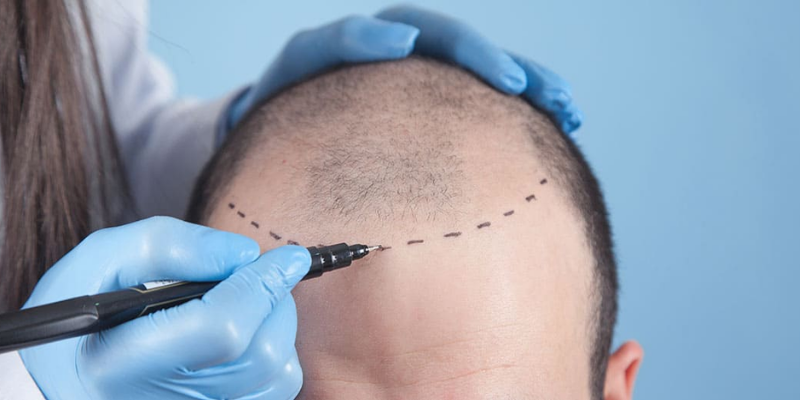How Long Does A Hair Transplant Last
Hair transplantation creates worries among individuals considering the treatment because it has such a big impact on human health, both physically and mentally. So, how long does a hair transplant last? It’s crucial to understand how many sessions and grafts should be transplanted to compensate for the person’s hair loss before addressing the issue of how many sessions does a hair transplant take.
The customer should make every effort to prepare himself for the hair transplant process. After you’ve made your decision, do considerable study on hair transplantation; choosing the right specialist and hair transplantation center is crucial. The hair transplant surgeon should be an expert in the field with a lot of experience. Hair transplant recipients should also pay attention to how their doctor assesses them. Because hair loss has so many causes, it reflects a wide spectrum of human characteristics. The doctor must thoroughly check the causes of hair loss, the starting line of the hair on the forehead, and the status of the remaining hair follicles.
Grafts are tissues taken from hair follicles and grafted. One or more hair follicles may be present in the grafts. A session refers to the number of hair transplant treatments that will be conducted on a person. The number of hair transplantation treatments required is determined by the patient’s hair density in non-shedding areas. The higher the patient’s hair density is, the more hair follicles are eliminated. When hair is scarce, the number of hair follicles to be harvested decreases. Depending on the patient’s responsiveness, it can be utilized in one session or up to three.
How Long Does A Hair Transplant Last: Numerous Hair Follicles Are Transplanted
A huge number of hair follicles transplanted is less important than a good and lasting hair transplant. Hair follicles must be carefully removed to avoid death of the surrounding tissue. The doctor’s, team’s, and hair transplant facility’s quality become crucial at this time. The second and most powerful factors to examine are the orientation of existing hair follicles and the harmony of the hair line from the forehead to the face. Hair follicles gathered may contain single, double, or triple hair follicles. How long does a hair transplant last? This is approximately 2-3 times the amount of hair removed from the follicle. If hair transplantation is performed by a trained team, baldness can be resolved in a 6-9 hour session.
Hair Transplantation Process
From start to end, including the time before and after the treatment, hair transplantation takes exactly one year. After the hair transplantation process, reddening and crusting, as well as crust shedding and shock shedding, occur. These are very normal events. It takes a year for all of the transplanted hair to grow in and for the efficacy of the therapy to be fully obvious.
Hair transplantation entails moving grafts from the donor area to the target area one at a time, resulting in irritation and crusting. Following this procedure, the skin becomes red. Crusting develops during the healing phase of this region following surgery. The crusts can fall off in as little as fifteen days.
Shock shedding: One to three months after the crusts have shed, the shock shedding period begins. During shock shedding, the existing transplanted hair on the skin is eliminated, and new hair fiber synthesis begins. During the shock shedding period, the transplanted hair follicles are unharmed.
How Long Does A Hair Transplant Last: What Is A Hair Root, And What Does It Mean?
For how long does a hair transplant last answer, we also need to explain some terms. The terms “hair follicle” and “graft” are frequently misconstrued. The hair root is a structure that encompasses the bottom half of the hair and is surrounded by hair-producing cells, as well as being lodged in the skull’s fat tissue. A graft is the structure extracted from the scalp where the hair follicles are inserted. At least one and up to four hair follicles are present in each transplant. Grafts are taken from the donor site and prepared for transplantation to the recipient site. The number of transplants required by the patient is usually determined by the doctor prior to the operation.
Hair transplantation can help patients with male pattern baldness. Male pattern hair loss develops as a result of the activity of male hormone in men who are genetically vulnerable to it. The cells that produce hair around the hair follicle gradually die under the influence of this hormone. Hair begins to thin, grow, and finally fall out as a result. For these people, hair transplantation is the most effective and long-lasting treatment option.
If your front area has been opened by hair transplantation or if your temple area has gone too far, 2,000 grafts of hair transplantation can restore your hair-free state. When 2000 Graft Hair Transplantation is performed, between 3,000 and 3,500 hairs are transplanted on average. The temple area can be easily covered with this much hair. The number of grafts varies from individual to person. When having a hair transplantation procedure, grafts are typically removed from the nape area. Grafts are available in various sizes, forms, and root counts.
What Is Hair Structure, And What Are Its Different Types?
Hair structure is a term that describes how each person’s hair is structured. The hair structure is made up of five fields in total. The components that make up the hair structure are hair, skin, muscle, root sheath, and gland. Five layers make up the hair structure. The surface of the skin, the layer beneath the surface of the skin, and the layer beneath the surface of the skin are the three layers.
The pericranium is an outer covering layer that is part of the support layer’s loose connective tissue section (Aponeurosis). On the skull, the scalp is present in varying thicknesses. The back of the head has the thickest scalp, whereas the front has the thinnest. Because the subcutaneous layer contains a large amount of adipose tissue, the amount of subcutaneous adipose tissue does not change with weight gain or loss.
How Long Does the Tightness Last After a Tummy Tuck?
Questions like, “how long does the tightness last after a tummy tuck?” and “how long does tummy tuck last?” are two of the most commonly asked by patients. After all, when getting a tummy tuck, you must conduct comprehensive research to understand the risks associated with it. For some patients, with advanced health conditions, tummy tucks can drastically improve their quality of life. Generally, tightness lasts for a few weeks after the surgery. In some cases, it can take several months for the stomach to regain normal nerve function. Refer to your doctor for complete information on a tummy tuck in Turkey. Prices for the procedure will also depend on your unique case.

Another thing to know about tummy tucks is that they are permanent. The skin and fat cells removed during the procedure cannot grow back. So, any internal sutures to repair stomach muscles are designed to remain in place indefinitely. It is possible for you to get a tummy tuck if you have excess fat or skin around your stomach or a weak lower abdominal wall. For tummy tuck cost, Turkey is an excellent option to consider. Get in touch with a clinic today to learn more about “how long does the tightness last after a tummy tuck?”.



